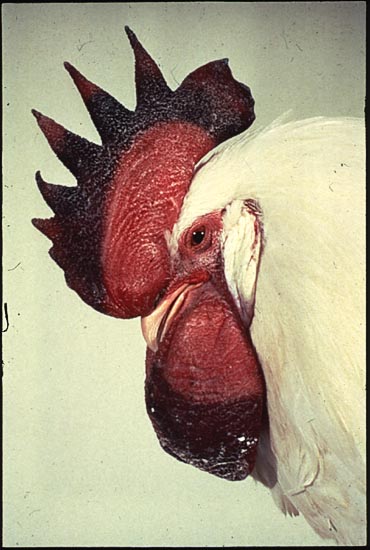Happy Holidays! All of this week’s posts will be themed around the winter holiday season. Today’s path rounds are on 𝐟𝐫𝐨𝐬𝐭𝐛𝐢𝐭𝐞!
𝐖𝐡𝐚𝐭 𝐢𝐬 𝐢𝐭?
𝐅𝐫𝐨𝐬𝐭𝐛𝐢𝐭𝐞 is a potential outcome of exposure to severe cold. However, it is actually fairly uncommon in our animal species, thanks to their long hair!
𝐖𝐡𝐨 𝐠𝐞𝐭𝐬 𝐢𝐭?
Typically animals only get frostbite if they are poorly acclimated to their environment, become wet, or are very young or malnourished. Most animals that have a good hair coat and are acclimated can tolerate temperatures of -𝟓𝟎º𝐂 (-58ºF) for prolonged periods.
Young animals are more prone to frostbite because they have a low 𝐬𝐮𝐫𝐟𝐚𝐜𝐞 𝐚𝐫𝐞𝐚 𝐭𝐨 𝐯𝐨𝐥𝐮𝐦𝐞 𝐫𝐚𝐭𝐢𝐨, meaning that they don’t have enough body mass to maintain their core temperature, relative to how much heat they are losing from their skin surface.
𝐖𝐡𝐚𝐭 𝐜𝐚𝐮𝐬𝐞𝐬 𝐢𝐭?
There are two main issues occurring in frostbite: 𝐯𝐚𝐬𝐨𝐜𝐨𝐧𝐬𝐭𝐫𝐢𝐜𝐭𝐢𝐨𝐧 (reduced blood flow) and 𝐜𝐞𝐥𝐥 𝐟𝐫𝐞𝐞𝐳𝐢𝐧𝐠.
When the body gets cold, one of its first instincts is to constrict small vessels at the periphery, in order to keep the nice warm blood circulating in the core where all the important organs are. Not only does this prevent the tissues from being warmed by blood, it also prevents them from receiving vital nutrients they need to survive. Ultimately, this leads to 𝐧𝐞𝐜𝐫𝐨𝐬𝐢𝐬 (cell death) in these tissues. This is why the parts of the body furthest from the core, like ear tips, toes and the end of the tail, are most commonly affected by frostbite.
Further causing problems for the cells is the cold itself! A cell is basically a big bag of fluid, and when they get severely cold, ice crystals can form within them. These ice crystals can poke through the cell membrane and damage 𝐨𝐫𝐠𝐚𝐧𝐞𝐥𝐥𝐞𝐬 (the organs of a cell), causing further cell damage and death.
𝐖𝐡𝐲 𝐢𝐬 𝐭𝐡𝐢𝐬 𝐚 𝐩𝐫𝐨𝐛𝐥𝐞𝐦?
Tissue necrosis is never a fun time, but frostbite can cause such significant necrosis that it affects multiple tissue layers, even extending into deeper tissues. This is called 𝐝𝐫𝐲 𝐠𝐚𝐧𝐠𝐫𝐞𝐧𝐞. Ultimately, the affected tissue will fall off. If the tissue affected is just the tip of the tail or tip of the ear, it probably won’t affect the animal much, other than being a bit painful. However, in some cases, the necrosis can be so severe that the 𝐝𝐢𝐬𝐭𝐚𝐥 (furthest from the body) portions of limbs can be lost! This is most commonly seen in calves born into extreme cold.
𝐇𝐨𝐰 𝐢𝐬 𝐢𝐭 𝐝𝐢𝐚𝐠𝐧𝐨𝐬𝐞𝐝? 𝐇𝐨𝐰 𝐢𝐬 𝐢𝐭 𝐭𝐫𝐞𝐚𝐭𝐞𝐝?
Frostbite can be diagnosed based on the appearance of the tissue, which is usually white. It can also be dark red to black if it has progressed to necrosis. Once identified, the affected tissue needs to be warmed very slowly, usually by placing the animal in a room temperature area.
𝐏𝐡𝐨𝐭𝐨𝐬
1) A pig’s ear tip with frostbite.
2) Frostbite can affect poultry too!
3) What a cattle farmer might see in a young calf with frostbite. Often the first sign is 𝐬𝐮𝐛𝐜𝐮𝐭𝐚𝐧𝐞𝐨𝐮𝐬 𝐞𝐝𝐞𝐦𝐚, or swelling, of the lower limbs.
4-6) Examples of sad animals who lost the distal portions of their limbs from frostbite ![]()
𝐒𝐨𝐮𝐫𝐜𝐞𝐬
Maxie, G. Jubb, Kennedy and Palmer’s Pathology of Domestic Animals, Volume 1. Sixth Edition.
Photos 1-6 © Noah’s Arkive contributors King, Luginbuhl, Larsen licensed under CC BY-SA 4.0.










